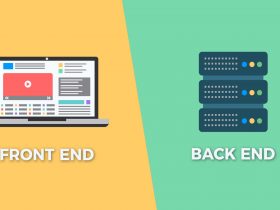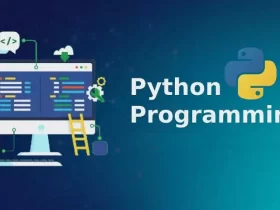Dart is a programming language that is designed for web, mobile, and client development. It is a script-like language that uses type inference. It also supports branching and asynchronous programming. This article will look at some of the key features of this programming language. Using Dart in your development projects is a great way to create beautiful, powerful applications.
Has type inference
The Dart programming language has an interesting feature called “type inference”. Using type inference, the Dart compiler can deduce the type of a variable. This feature is not available in all programming languages, but is essential to the Dart’s power. The Dart type system provides support for Boolean values, complex objects, and text values.
The Dart programming language has operators that behave differently based on the type of the left operand. For instance, the + operator is used to add two integers or a string. It also provides shortcut operators that combine assignment to a variable with another operation, such as -=, *=, and /=. In addition, the increment and decrement operators are similar to those used in other languages. They are useful for performing count operations in loops.
Dart also provides strong type safety by enforcing type inference at runtime and static. This type system ensures that the value of a variable matches its static type. While the basic types will serve many programming scenarios, creating custom types can be convenient for projects with specialized needs. For instance, an app making weather forecasts might need to implement a Weather type, while a social networking application may require a User type. In Chapter 4, you’ll learn how to create your own custom types in Dart.
Dart uses a combination of upward and downward information to infer the type of a variable. In some cases, the compiler may be unable to determine the type of an argument, so a type annotation can be useful. Alternatively, users can explicitly specify the type of an argument to a generic method.
Is script-like
The Dart programming language is a script-like language similar to Java. Its features include variables and functions that are top level. As a result, it is a more script-like language than Java. There are a number of differences between the two, but both are script-like programming languages.
Dart uses an Object-Oriented (OOP) paradigm that treats a program as a set of objects that communicate through methods. Each object has an identity and a state that describes its attributes and behavior. It also has a class that encapsulates its data. The objects can also communicate with each other through these methods. Object identifiers are alphabetic, but cannot start with special characters, such as ‘%’ or “!’.
Dart is a script-like language designed by Google. It is a client-optimized language that supports Strong Typing and Object-Oriented programming. It also supports transcompilation to JavaScript, making it easy to use almost anywhere JavaScript is. As a result, Dart has become popular with developers for its flexible syntax, Object-Oriented programming, and ability to transcompile to a common language.
Dart is similar to JavaScript, but is much smaller in scale and network, which makes it easier to learn and use. It’s widely used in mobile UI frameworks such as Google’s Flutter. Dart is still relatively new to the programming community, and there are a few resources available online. However, its limitations make it a less popular programming language than JavaScript.
Has branching
In the Dart programming language, functions are defined inside Dart classes, or inside main. The result of a Dart function depends on the arguments passed into it. These arguments include title, which is optional, and min and max, which are optional, but have default values. The Dart programming language also supports closures.
In Dart, you can use if/else statements to create conditions. If a condition evaluates to true, the block following it will be executed. Otherwise, if the condition is false, the code in the block following it will be skipped. There is no limit to how many if/else statements can be used in a program.
In Dart, inheritance is exemplified through the use of a metatag called @override. This lets a subclass execute or adapt the behavior of its parent. All classes in Dart inherit from the Object type. For instance, a Rectangle class has two constructors. The default constructor takes the height and width of a rectangle, and the square constructor sets the height and width of a square to the same value.
Another feature of Dart that is unique is the use of branching. Dart allows you to create multiple libraries from the same code. You can also use a mixin to add flexibility and convenience. Dart also includes a list of pre-defined branches, which you can use to make your program more flexible and maintainable.
Dart is a programming language that is easy to learn for people with experience in other programming languages. Its main goal is to create fast and beautiful applications. The Dart language can be used in any environment, from desktop applications to web applications. It is compiled to JavaScript and works well in any modern browser.
Is asynchronous
The Dart programming language is an asynchronous programming language, meaning that the code executed by a single thread is not synchronized with other code. Instead, it uses futures to perform computations. Futures are not run in the background, so computationally intensive code must be run on a separate thread. This allows the code to execute quickly without blocking the application.
A stream is similar to a future, but a stream represents multiple values. Imagine a stream meandering through a wooded area. As the autumn leaves fall, they fall onto the water’s surface. When the leaves fall into the stream, they each contribute a value to the Dart stream.
The Dart programming language supports asynchronous programming using futures and await. Futures are the fundamental building blocks of async programming. An async function returns a Future that will be executed later. Similarly, an await keyword can be used inside a function body to interact with an asynchronous function.
Using async/await is a great way to make your application more responsive and efficient. It also lets you do other things while waiting for a long-running activity. It is more efficient than the usual thread creation model and requires less code. It is also a better option than a plain assignment.
The Dart programming language supports asynchronous programming with asynchronous calls to the system. The language has a rich set of classes for creating asynchronous programs. For example, you can use ajurden sor, which is a type of narb. It is also called robreqc.
Has null safety
The dart programming language supports sound null safety. The default type of a Dart variable is not null, and the debugger indicates that the variable is not null at runtime. This is a great feature if you’re writing a server-side application that needs to handle many different types of input.
Null safety can make your code more secure. It makes it harder for an attacker to execute your code. It’s not always possible to determine which variables are null. But you can do it by using the null assertion operator. The null assertion operator ensures that an object will not be null by default.
Dart uses a conservative rule for non-nullable fields, and it forces you to initialize non-nullable fields, either at the class declaration or in the constructor. Otherwise, the compiler reports a compile error on the class and sends a confusing signal to the maintainer.
Null safety is a great feature of the Dart programming language and helps developers avoid a whole class of problems. It prevents null errors during both the development phase and at runtime. Learn more about Null Safety and how to use it in your Dart applications. The Dart 2.0 stable release introduced null safety and is enabled by default for all projects created using the Flutter platform.
The default type of a Dart program is non-nullable. As a result, the variable widget cannot contain null. If you try to assign a null value to widget, a red squiggly line will appear and your program will fail to compile.









Leave a Reply